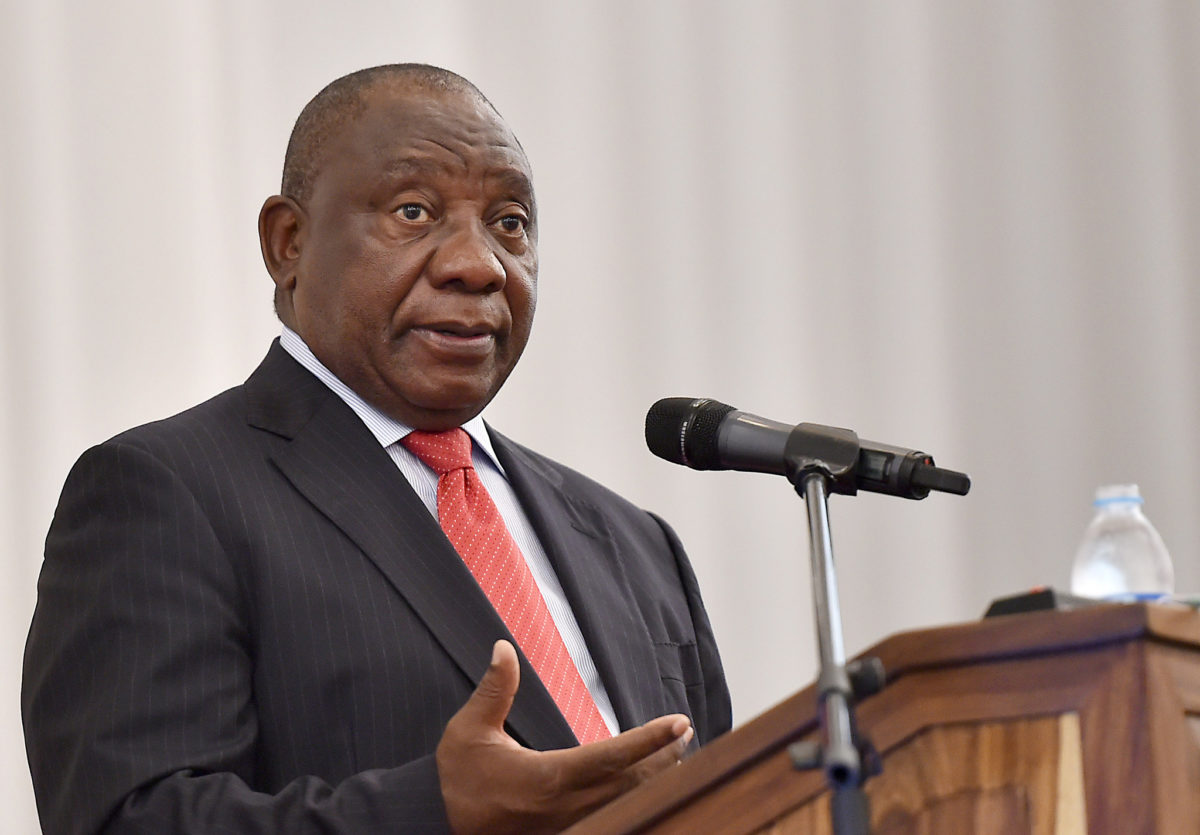With developers taking aim at the South African government for mooting the imposition of anti dumping duties on solar panel imports, Cyril Ramaphosa’s ANC regime can claim to have put itself in the vanguard against climate change by introducing a national carbon tax.
The South African president has signed into law Carbon Tax Act No 15 of 2019, which will tax greenhouse gas emissions from Saturday onwards and may help reinvigorate the nation’s solar energy industry.
Solar in South Africa has been afflicted by the much publicized financial travails of national utility ESKOM and project developers have warned protectionist measures against cheap module imports will further handicap the country’s energy transition.
The government will hope its new blanket carbon tax on emissions will incentivize polluters to turn to renewables for power, even if the law has been heavily caveated for its initial, three-and-a-half-year Phase 1.
Under the terms of the legislation, which has come after a nine-year consultation period, carbon taxes will be applied to emitters whose activities exceed a stated threshhold, for example providers of electricity and heat which use more than 10 MW of thermal power.
Tax allowances up to 2023
Phase 1, which will run from Saturday until the end of 2022 – according to an announcement made by the South African government on Sunday – will provide a range of tax-free allowances to enable large emitters to adjust to the system before Phase 2, which will be in effect from 2023-2030, subject to a review of the success of the opening stage.
With selected emitters eligible for allowances to remove all their carbon tax liability, and the majority having a 90% carbon tax-free ceiling, all emitters will qualify for a basic 60% carbon tax-free allowance during Phase 1 of the scheme.
Popular content
Further 10% tax-free allowances will be offered for each of “process” and “fugitive” emissions – which were not defined in the announcement, but may apply to incidental and unavoidable emissions ancillary to direct operations and energy consumption – as well as a 10% allowance for unspecified “trade-exposed” sectors. A 5% “performance allowance” will be awarded to emitters who demonstrate they are reducing emissions, and a further 5% will be available for emitters with a carbon budget that meets reporting requirements. Emitters will also be able to claim up to 10% for carbon offsetting activity, with global law firm Eversheds Sutherland reporting yesterday that allowance would be an award of 5% or 10%.
Confusion over tax rate
The government announcement stated the initial rate of carbon tax would have no effect on consumer prices as it would be applied at a low tariff of ZAR6-48/ton ($0.41-3.25). Eversheds Sutherland yesterday noted the introductory rate will be ZAR120/ton before allowances are taken into account and will rise by the previous year’s level of consumer price inflation plus 2% each year during Phase 1, and by the consumer inflation rate annually during Phase 2.
“Consumers will most certainly begin to feel the effects in the coming months as the price of goods and services rise,” stated the Eversheds article.
The legal firm added, South Africa opted for one of the world’s first true carbon taxes – rather than the emissions trading schemes seen elsewhere in the world – because a tax is simpler and more transparent.
This article was amended on 30/05/19 to reflect Eversheds Sutherland is a law firm, rather than an accountancy and that the ZAR120 figure cited is the starting rate of the carbon tax before allowances are applied. Mention of a rise in petrol and diesel costs has been removed as these are a separate legislative issue.
This content is protected by copyright and may not be reused. If you want to cooperate with us and would like to reuse some of our content, please contact: editors@pv-magazine.com.



Thanks Max. I feel we should communicate the relationship between SA carbon tax and any increased move to renewables more clearly. The tax does not apply to Scope 2 grid electricity usage – well not for now anyway. So the tax is not therefore likely to directly influence a decision to replace grid electricity with solar, for example. Having said this, the trickle down effect of increased electricity tariffs from Eskom, as a result of its own carbon tax profile, will indirectly influence the uptake of solar downstream. The outcome is similar and of course its great news.